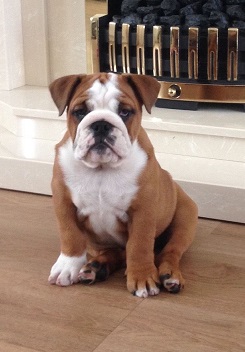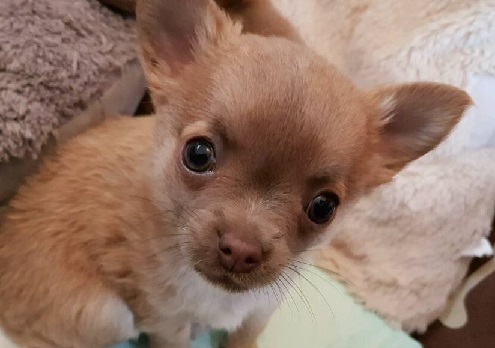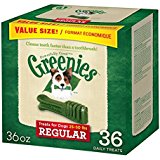
Welcome to Doggy Toggery! This website is all about dogs, dog health, dog behavior, dog training and just about any aspect of dog care.
Life with a dog should be a pleasure, and whether or not your dog gives you pleasure is likely to depend on how healthy the pooch is and on how well trained they are – Which is why I have focused particularly on these two aspects of living with dogs.
If you are interested in training your dog, you might enjoy starting with how dogs learn and looking at the seven habits of highly effective dog trainers
If you have just arrived on Doggy Toggery and are thinking of getting a dog, make a start with the series The ultimate guide to getting a dog below, and if you want to find out who is behind Doggy Toggery check out my about page!
I enjoy writing about dogs, and I hope very much that you enjoy reading the articles on this website. If there are subjects, you would like to see covered here, or comments you would like to make, please contact us.
Contents
- 1 Pedigree or Mutt
- 2 Choosing a Breeder
- 3 Selecting your Puppy
- 4 Preparing for your new pup
- 5 Dog Shampoo – Giving Your Dog The Perfect Bath
- 6 Best Dental Chews For Dogs – Maintain Good Doggy Dental Health
- 7 Best Dog Life Jackets – Keep Your Dog Safe in Water
- 8 Dog Harness – Provide Comfort While Walking on a Leash
- 9 Dog Proof Trash Cans – Keep your Dog out of the Trash
- 10 Bringing your new Puppy Home
- 11 When is the best time to get a puppy?
- 12 Conclusion
- 13 Resources
Pedigree or Mutt

Pedigree dogs are hugely popular across the world. However, recently, there has been a good deal of debate as to whether or not a purebred dog is a good thing.
In the UK this discussion kicked off in 2008 with a BBC program called Pedigree Dogs Exposed. In this program, some dog breeds were featured in which the fundamental characteristics of the breed are incompatible with a healthy and happy life. You can read more about some of these dogs in the post ‘Breeding Dogs with Deformities’.
As a result of PDE and the many issues it raised, there was a drop in pedigree dog registrations for a while, and the BBC suspended its long-standing coverage of the Kennel Clubs annual flagship dog show Crufts.
Is it safe to buy a pedigree dog?
Any potential pedigree dog buyer will want to know if it is a good idea to buy a pedigree dog. If you purchase a pedigree puppy, do you risk having a sick dog? Is it better to purchase a mongrel or cross-bred dog?
There is not clear cut answer to this question, but it is helpful to look at the facts.
There are many pedigree breeds of dog that are in excellent health. If you buy such a puppy, you will not only have a good chance of a dog which lives a long and happy life, and you will have some other advantages too.
A dog that is purebred has been bred for the predictability of its appearance and in some cases for its abilities too. You stand a better chance of training a dog as a shooting companion for example if you buy a pedigree gundog from working lines, than if you purchase a mongrel of unknown origin. The same logic applies to sheepdogs and terriers.
Many pedigree dog breeders test their breeding stock for a range of inherited genetic conditions. A cross-bred dog or mongrel is far less likely to have been bred with from stock that is proven clear of these conditions. You will also need a pedigree dog if you want to compete in Kennel Club run gundog competitions, or to enter the Show Ring.
However, there is no doubt that in some pedigree breeds, there are problems that any potential dog owner should be aware. If you are thinking of buying a dog, it is important to be aware of the history and characteristics of your chosen breed. You might find it helpful to read the post ‘Five things to avoid when getting a dog’ for more information.
Advantages of buying a Mutt

A dog bred from mixed ancestry is less likely to inherit defective genes for the same disease from both parents. That is not to say it cannot happen, but it is less likely simply due to the wider mix of genetic information.
However most mongrels and cross-bred dogs have not been produced by health tested parents and so some of the more common genetic problems (hip dysplasia for example) which are present in many different breeds of dog, are still a distinct possibility. Nor are puppies born of accidental matings so likely to have been given the expert attention of a very experienced dog breeder during the first few formative weeks of their lives.
The kind of long term support and advice offered by many pedigree dog breeders to their puppy buyers can be a valuable and important feature of buying a puppy for a first-time dog owner.
Purchasing a mongrel puppy is likely to be cheaper than the purchase of a pedigree puppy, and we look at this in more detail in ‘Five things to consider before buying a dog.’
Ultimately the choice is yours. If you want a pedigree dog, by all means, go ahead and get one. Just do your research. If you have fallen for a mongrel or cross bred puppy, and you do not mind how big he grows or what he looks like once adult. Then the chances are you will be perfectly happy with your choice.
Choosing a Breeder
Perhaps you have now made the decision to buy a pedigree puppy, and you have settled on the breed of dog that you feel will best suit your family. The next step is to decide where your puppy is going to come from, and this means choosing a breeder. Moreover, we can divide breeders into four categories;
- Breeders that breed dogs for a practical purpose or for competition involving practical skills
- Breeders that breed dogs for the show ring
- Breeders that are breeding from a family pet
- Breeders that are farming puppies for profit
You need to avoid breeders that fall into the fourth category puppy farmers. The post in the link explains why.
Work or show
Several of our popular dog breeds, including many of the gundog, sheepdog, and terrier breeds, have become divided into those that are bred for the show ring, and those that are bred for work.
Show bred puppies are sometimes more placid and less demanding than working bred puppies, but some show dogs have suffered at the hands of breeders that have lost sight of the original purpose of the dog. The German Shepherd Dog is an example. In this breed, the show dogs have an exaggerated sloping topline which causes weakness and poor coordination in the hindquarters. This is one of the reasons why it is important to research your chosen breed carefully and to look at any arguments raging within the breed, from both points of view, before making a decision.
Health testing

Most pedigree dog breeds have some inherited diseases which are known to be a problem in that particular breed and for which tests have been developed. In some breeds, the show dog community has been more diligent in trying to eradicate these diseases than the working dog community. The English Springer Spaniel is an example. A working bred Springer breeder is less likely to have health tested their breeding stock.
Making sure that your pedigree breeder has tested their breeding stock for diseases, which are common to that breed, is crucial. Also, this is something that you are more likely to find lacking in some pet dog owners that have bred a litter from their family dog. Health testing is expensive, and a reputable breeder is more likely to have carried out all the right procedures.
Contacting a Breeder
Once you have decided what kind of breeder you want, you need to find one that is not a million miles away from your home. Each breed of dog has a ‘breed club’ and many of these clubs have websites. Many reputable breeders belong to one of these clubs, and this is a good way of getting in touch with one. You can find a list of breed clubs in the UK on the Kennel Club website. Other countries will have a similar list at their own Kennel Club.
Looking for a website advertising thousands of puppies of all different breeds can be a bit of a lottery, not many reputable breeders will put their puppies on these types of site.
Many, but not all, good breeders, and some awful breeders, have excellent websites. While these will only tell you what the breeder wants you to know, sometimes you can read between the lines.
Some breeders will also advertise and websites relevant to their specialty. Many gundog puppies, for example, are advertised on the Gundog Club website.
Word of mouth can be a good way to find a breeder, and if you hear of a breeder that you are unsure about, google them. It is surprising what Google can turn up sometimes!
Visiting your breeder
Remember that most good breeders will have many of their puppies booked up before they are even born. Finding a good breeder in advance of the time you hope to bring a puppy home should be your priority. You can then visit the breeder, book a puppy well in advance and even have the pleasure of visiting it as it grows.
A reputable breeder is unlikely to have more than two or three litters of puppies each year, and will probably be breeding from only one or two different breeds of dog. Some or all of the breeder’s dogs may be housed outdoors in kennels, but this is relatively healthy for any breeder with more than five or six adult dogs. All the breeder’s bitches will have a purpose other than to produce puppies. They will be competing in dog shows, or working dog competitions, or living with the family as a pet.
Be concerned about any bitch whose sole function in life appears to be the production of puppies.
Selecting your Puppy
No choice?
It is entirely possible, in a well-bred litter, that the question of choice will not arise. Some breeders will insist on allocating puppies as they see fit. You can always walk away, but picking out the puppy of your choice may not always be an option. Moreover, what if there is only one puppy left? Should you even consider the ‘reject’ of the litter?
The last puppy?
A lady once telephoned me to inquired about purchasing one of my puppies and was disappointed to be told that there was only one puppy still available. They were about five weeks old at the time, and all the others were spoken for.
“Oh” she said, sounding very downcast “I don’t think I would want that one”
When I inquired as to what her concerns were she said
“I don’t want the puppy that no-one else wants”
and I am sure that many buyers probably feel the same way.
However, the reality is that the last puppy in a litter that sells out before they are six weeks old, may well be of a higher standard than one where you have a choice of five different puppies at eight weeks old. In fact if none of the puppies are sold at eight weeks, you might want to be asking yourself why that is.
So, don’t be afraid of looking at the last puppy. Someone has to be last, and bear in mind that litter mates are often very similar, and that those doing the choosing are very rarely experts. Many a champion has been made out of the last puppy in the litter, just because that is the one the breeder was left with when everyone else had made their choice.
Predicting the future of an eight-week old bundle of joy, is not an exact science. What you do want to ensure, in so far as that is possible, is that the puppy you take home is healthy.
A healthy choice

A lady once telephoned me to inquired about purchasing one of my puppies and was disappointed to be told that there was only one puppy still available. They were about five weeks old at the time, and all the others were spoken for.
“Oh,” she said, sounding very downcast “I do not think I would want that one.”
When I inquired as to what her concerns were, she said
“I do not want the puppy that no-one else wants.”
I am sure that many buyers probably feel the same way.
However, the reality is that the last puppy in a litter that sells out before they are six weeks old may well be of a higher standard than one where you have a choice of five different puppies at eight weeks old. In fact, if none of the animals are sold at eight weeks, you might want to be asking yourself why that is.
So, do not be afraid of looking at the last puppy. Someone has to be last, and bear in mind that litter mates are often very similar and that those doing the choosing are very rarely experts. Many a champion has been made out of the last puppy in the litter, just because that is the one the breeder was left with when everyone else had made their choice.
Predicting the future of an eight-week-old bundle of joy is not an exact science. What you do want to ensure, in so far as that is possible, is that the puppy you take home is healthy.
The appearance of the puppy
Having satisfied yourself that the puppies are apparently in good health, if you still have a choice, you may want to think about the final appearance of the puppy. If color is important to you, that may be your deciding factor.
Puppies change enormously, but there are some indicators as to final appearance. It is possible with experience to tell to a degree, which pups are likely to have a chunkier head, or a better tail for example. These factors may be important to you if you would like to have a go at ‘showing’ your puppy later on. Your breeder will probably be your best guide as to how a puppy is likely to turn out. Ask her which is her favorite in appearance and why!
Puppy Temperament
Again, puppies change enormously. It is tough to gauge the temperament of a puppy based on observing it for twenty minutes when it is six weeks old. This is often the only opportunity you have. The shy puppy in the corner could turn out to be the boldest of the bunch a few weeks later. Behavior at this very young age is only the merest indicator.
You may want to consider avoiding extremes. The very boldest and most confident puppy could be quite a handful in a few months time. Your breeder may be able to guide you in the right direction, but it is all ultimately a bit of a guessing game. In many cases there the right puppy will choose you. Provided the pups are all healthy and happy; it is fine to go with your heart.
Paperwork
When you buy a pedigree puppy, a contract of sale has taken place, and paperwork is exchanged. Whether or not your breeder gives you a paper contract, you still have some fundamental rights, just as you would if you have purchased a washing machine. The big difference is that you are unlikely to fall in love with your washing machine.
This is why it is terribly important to make sure everything is in order before you take your puppy home, and to have your puppy checked out by your vet, within a day or two of bringing your puppy home and before you fall head over heels in love.

Preparing for your new pup
As the big day approaches, and it is nearly time to collect your puppy, it is a good idea to go over what you will need to know, and to buy, to get your puppy off to the best possible start.
A puppy’s needs
A small puppy’s basic needs are fairly simple. Your new puppy needs a warm, safe place to rest away from the attentions of small children or other dogs. A dog crate is ideal, but a large cardboard box will suffice as a temporary measure. Remember that unsupervised puppies can munch their way through electric cables and your best chair leg quicker than you can say ‘dog crate.’.
Your puppy needs to be fed small, frequent meals (your breeder should give you a feeding sheet) probably four times a day until he is twelve weeks, then three times a day until six months. He needs social time with people and other dogs, and he also needs lots of sleep and to learn to be alone for short periods and at night, which is likely to be a new experience for him.
Young puppies do not need walks, loads of exercise, heaps of toys, or fancy designer beds. The pup will need a place in your garden where the dog can relieve himself. They also need to be protected from infection until he is fully vaccinated, and once he is out and about in public, he will need a collar and lead. You may find our list of the five essential purchases for your puppy helpful.
Understanding canine behavior and development
You will find life with a puppy somewhat easier if you have a good understanding of the developmental phases that puppies go through, and of the way in which dogs learn new behaviors and skills. Reading a good book on puppy development in advance of your puppy’s arrival will stand you in good stead. You can buy a copy of The Right Start from the Gundog Club. This takes you step by step through all the issues which may arise when you bring your new puppy home.
Socialization
If you do not buy a book, do at least read up on puppy socialization – this is a topic we will cover in more detail in a later article. However, for the time being, it is important to know that new puppies need to be introduced to a wide range of experiences to ensure that they do not grow up as fearful adults. Fearful dogs are often aggressive, and socialization is especially important in breeds where aggression is sometimes a feature.
Healthcare preparations
It is a good idea to make an appointment to take your new puppy to your local vet the day after you bring him home and get him checked up. You will also need to contact your vet without delay if your puppy becomes unwell. Puppies are robust and healthy, but when they do get sick, like babies, they can go downhill quite quickly.
Puppies also need a series of vaccinations against some of the most severe diseases that they can catch from other dogs, or from the contaminated surfaces and water. Your breeder may have already arranged the first of these. If so, they will give you your puppy’s vaccination card which you will need to keep in a safe place and take with you when you go to the vet.
Prevent Chewing
Since your pooch arrived at his new home, he has chewed your shoes, the power cord of your laptop and is now eyeing up your couch. It is getting expensive and dangerous for both your relationship and the pup.
Some of this we can put down to normal and healthy part of any puppy’s development, but there is also a medical condition that can cause chewing. The illness is called pica and causes your pet to eat non-food items in an attempt to deal with nausea. A visit to your veterinarian for a clean bill of health is the first step. Pups are prone to chewing their beds especially and perhaps a chew proof dog bed would be a wise investment.
Assuming pica is ruled out or diagnosed and treated, the next step involves finding acceptable outlets for your dog’s chewing. Puppies use their senses to explore the new world, and their sense of taste is stimulated as they try chewing on various objects.
The puppy should be protected from dangers that are around the home. These risks include things like poisonous plants, needles, electrical cords, cleaning products and even things like chocolate.
Preparing for the journey home
Small puppies are often car sick so make sure you have some newspapers, tissues or wet wipes, and a rubbish sack in which to place anything unpleasant. It might not be a good idea to travel dressed in your best finery. If you can arrange the trip so that you arrive home with the puppy early in the day, so much the better. This gives him time to take in his new surroundings before he has to go to sleep alone for the very first time.
Here is a final checklist for you to make sure you have not forgotten anything before the big day
- Make a safe place in the garden for the puppy to use as a toilet
- Make a secure location indoors for the pup to sleep at night and when you cannot watch him
- Arrange for someone to be at home, or in and out much of the day for the first few weeks
- Check out your puppy’s paperwork and make sure all is in order
- Read up on puppy socialization
- Make an appointment with your local vet
Choosing a Dog Crate for your Puppy
Providing your dog with a crate will appeal to their natural instincts as a den creature. A dog crate will provide your pooch with somewhere to hide from danger, sleep and relax in a secluded area. There is a broad range of different dog crates on the market in 2016; each has their pros and cons as well as being compatible with various budgets.
Heavy Duty Dog Crates
These tough crates are designed to house the most ingenious escape artist pooches. You will need an escape proof dog crate if you have a dog prone to escaping or perhaps one of the brutally strong breeds like Pitbulls. Indestructible crates are on the more expensive end of the budget range, but that is because of the standards of material and craftsmanship used to create them.
Wooden Furniture Dog Crates
A dog crate need not look like a prison as dog owners now have the option of a stylish and often beautiful wooden dog crate. Wooden crates act as a den for your beloved pooch while also being an attractive feature of your home decor. Many wooden dog crates can double as side tables and pieces of furniture that compliment your home decor.
Dog Shampoo – Giving Your Dog The Perfect Bath
A dog bath can be a necessary task, especially if your dog has contracted a parasite, such as fleas or tics. Other occasions might include a messy day out involving a roll around in the mud or perhaps you just want to condition your dog’s coat and get them smelling sweet. It is important to choose the correct Shampoo for your dog to prevent drying out their skin or irritating their eyes.

Best Dental Chews For Dogs – Maintain Good Doggy Dental Health
Keeping your dog’s teeth clean is important for health reasons and will also save you money in potential future vet fees. Doggy dental chews are specially designed to rub away plaque and bacteria from your pooches teeth whilst also doubling as a tasty treat.
Best Dog Life Jackets – Keep Your Dog Safe in Water
Not all dogs are excellent swimmers, and there is no better way to ensure the safety of your beloved pooch around water than strapping a good canine lifejacket around them. Dog life jackets are ideal for weak swimmers like elderly or disabled dogs and those breeds of dog that are not naturally build to be buoyant in water.
Dog Harness – Provide Comfort While Walking on a Leash
Dog harnesses provide comfort for your pet while on a walk by spreading the pressure from the leash all around their body instead of just around the neck area. A good doggy harness should be chew proof, a snug fit and provide a secure leash attachment. Harnesses can also be used to allow pulling. Husky dogs are bred to pull sleds.
Dog Proof Trash Cans – Keep your Dog out of the Trash
Dogs love trash and upgrading your kitchen trash can to a dog-proof one would be a good investment if you do not want to come home to kitchen waste spread all over the floor and a messy pooch.
Bringing your new Puppy Home
The day you have been waiting for is finally here. The day you bring your puppy home to your family for the very first time is a momentous occasion. This article takes a look at what you can expect from your first day as a dog owner. If this is a big day for you, it is perhaps an even greater day for your puppy. For today he leaves his mother, brothers, and sisters, and all the humans he has ever known, to start life with his new family.
Fortunately, whilst moving home is undoubtedly stressful, this is not quite the traumatic experience it might seem. Puppies have very short memories and are extremely adaptable. Within a very few days, your puppy will have forgotten all about his previous life and be utterly fascinated by you and your family. You will be the center of his world for the next few weeks, and this can last forever if you manage your puppy well.
Collecting your Puppy
Hopefully, you will have been able to arrange to collect your puppy quite early in the day. Your breeder will be expecting you and should have a ‘puppy pack’ ready for you with food, information, and your puppy’s paperwork. Like any other purchase, when you exchange money for a puppy, a contract of sale now exists between you and the breeder. Many breeders will also give you a paper contract to sign. You can read more about puppy paperwork here.
The Journey – Bringing your Puppy Home
If you intend to transport your puppy by car, you will need to decide how he is going to travel. In theory, he is safest in a purpose built a metal or plastic carrying crate. In practice, if you use one of these on a long journey, be prepared for some noise and mess. The puppy may be scared and howl very loudly, and the stress may upset his stomach. I prefer to travel puppies in an open-topped cardboard box in the passenger’s foot-well so that the passenger can stroke and comfort the pup if he becomes distressed. While this might not be quite as safe as a proper crate, I believe that the distraction caused to the driver by a screaming puppy probably outweighs the advantages of the crate regarding safety.
You may find of course that the puppy sleeps happily in a well-padded crate. However, taking a small, sturdy box with you in the case of problems is a wise precaution. In both instances, line your travel container with old towels that can be thrown away if necessary when you reach home. Many puppies are car sick on the journey home. It does not mean that your dog is likely to be car sick in the future. Just make sure you have some wet wipes and a rubbish bag with you. Some doggy dental chews always go down a treat.
Introducing the toilet area
The first thing your puppy will want to do when you arrive home at the end of a long journey is to relieve himself. So carry him straight to the place in your garden that you want him to use as a toilet area, and put him down on the ground. Stay there with him until he has had a wee.
This is your very first step in house training. It is a long journey, and you will need to patiently take the puppy to this place several times each day, including after meals, after waking from sleep, after any exciting games, and every hour or so in between.
Indoors
It is a good idea to restrict your puppy mainly to one room, to begin. The kitchen is often ideal, as the wipe clean floor will minimize the impact of any ‘accidents.’ Also, there will be some of those. When you bring him indoors for the first time, he may seem a little overwhelmed. Try to resist the temptation to invite lots of friends around to see him until he has settled in a little. For now, let him explore his new room while you prepare him a nice meal.
First meals
Your breeder should have given you enough food to last your puppy a few days. If you intend to change the food, you can do so by gradually mixing a bit of the new food in with the old. However, for the first couple of days, try and keep them on what is familiar. So much else has changed, new food can wait for a day or two.
Puppies cannot digest all the daily food they need in one go. You will need to divide it into four or five portions fed at regular intervals during the day. This can usually be cut down to three pieces at about twelve weeks. If you give a puppy too much food in one go, he may well eat it, but is likely to have an upset stomach as a result.
Resting
Small puppies sleep a lot. When your puppy has had a chance to explore his surroundings, to be introduced to the family, and eaten his first meal, take him outside to empty himself and then pop him into his crate for a nap. If you do not have a crate yet, I strongly recommend you get one. In the meantime, a sturdy cardboard box can make a temporary bed. Put the crate in a room where there are family members so that the puppy has some company and ignore any whimpers.
When he has slept for a while, he can get up, be taken outside to empty himself, and brought in for some supervised time with the family again. This will be his routine now for the next few days. Toilet, play, toilet, eat, toilet, sleep, toilet, play.
A new life
Bringing a puppy into your life is quite a big responsibility. It is not unusual for you to feel a bit overwhelmed too! You will probably find it easier to relax and enjoy your puppy if you get into a routine right from the beginning and make sure that the whole family knows what the puppy’s routine is. I usually put a puppy’s routine up on the fridge so that if I am out, everyone knows when the puppy is meant to be eating, playing, sleeping and so on.
Life with a dog can be truly beautiful, or a daily struggle. The difference between is often a little knowledge, and about ten minutes a day spent on ‘dog training.’ Do get yourself a book on basic puppy training and management. It will make all the difference to your life. Don’t wait until your puppy is older. In a few weeks time, your puppy will gradually start to become more independent. Make the very most of this wonderful stage in your puppy’s development when you are automatically the center of his universe. If you are careful, the way he feels about you now can last a lifetime.
Good luck with your new puppy, and if you have any requests for puppy articles, feel free to comment below.
When is the best time to get a puppy?
When is the right time to bring a new puppy into your life? Bringing your first puppy home changes your life forever. Whether or not that change is a positive one depends on many factors, but picking the right time to have a puppy can make all the difference.
Fitting in with children
When you are considering buying a puppy, it is a good idea to think about how your new friend will fit in with your family. Dog owners usually cope quite well with pups and small children. However, for a first-time puppy owner, it can be quite stressful juggling the needs of a toddler and a puppy. You will also need to be very vigilant about keeping small children away from a puppy’s toilet area and from his bottom! As there is a risk of infection from the roundworms that puppies are susceptible.
Avoiding stressful life events
If you are about to move home or planning your daughter’s wedding, now might not be a good time to have a puppy. It makes sense to try and avoid major life events, or annual celebrations like Christmas, around the time you bring your new puppy home.
Time of year – When is the best time to get a puppy?
Puppies are great to care for when the weather is warm but envision standing in your backyard at 2 am in the morning with a flashlight, waiting for your pooch to go the to the toilet. How about you? Did you bring your new puppy home in the winter? Have you any tips for others thinking about the right time to get a puppy?
Conclusion
We hope that this guide has given you the information you need when considering getting a puppy. Please feel free to leave any advice, tips or any funny puppy stories below in the comments!
